An Overview of Hazelnut and Peanut Diversities Introduction: Hazelnuts and peanuts are two popular types of tree nuts that are widely consumed and have become a vital component of various cuisines around the world. Apart from their unique flavors and versatility in various dishes, hazelnuts and peanuts also offer numerous health benefits. This article provides a comprehensive summary of the diversities between hazelnuts and peanuts, covering their respective origins, nutritional profiles, culinary uses, and potential health benefits. Origins: Hazelnuts: Hazelnuts, also known as cobnuts or filberts, are native to Europe and Asia. They have a rich history dating back thousands of years. Today, Turkey is the largest producer of hazelnuts, followed by Italy and the United States. Peanuts: Contrary to what their name suggests, peanuts are not true nuts but rather legumes that belong to the Fabaceae family. Peanuts originated in South America, specifically in regions of Bolivia and Paraguay. Today, China and India are the largest producers of peanuts, followed by the United States and Nigeria. Nutritional Profile: Hazelnuts: Hazelnuts are packed with essential nutrients. They are an excellent source of healthy fats, including monounsaturated fats, which have been linked to improved heart health. They also contain a good amount of dietary fiber, protein, vitamins such as vitamin E, and minerals like magnesium, copper, and manganese. Peanuts: Peanuts are highly nutritious and offer several health benefits. Their nutritional composition includes healthy fats, predominantly monounsaturated and polyunsaturated fats, which are known to help reduce bad cholesterol levels. Peanuts are also rich in plant-based protein, dietary fiber, vitamins B3 and E, folate, magnesium, and phosphorus. Culinary Uses: Hazelnuts: Hazelnuts are celebrated for their distinct flavor and versatility in various culinary applications. They are commonly used in the production of chocolate spreads, such as Nutella, and are a popular ingredient in confectioneries, baked goods, and desserts. Additionally, hazelnuts are a flavorful addition to savory dishes, salads, and can be ground into a fine powder to make hazelnut butter.
nuts
 Peanuts: Peanuts have a wide range of culinary uses and are a common ingredient in many world cuisines. They are frequently consumed as a snack, roasted or salted, and are also used to make peanut butter, a staple in many households. Peanuts are added to sauces, such as satay sauce, and are often used in stir-fries, curries, baked goods, and desserts. Additionally, peanuts are widely used in the production of oils, flours, and various peanut-based snacks. Health Benefits: Hazelnuts: Hazelnuts offer several health benefits due to their nutrient-rich profile and unique compounds. The monounsaturated fats present in hazelnuts have been associated with reducing the risk of heart disease and improving cardiovascular health. They are also a good source of antioxidants, including vitamin E, which help protect cells from oxidative damage. Furthermore, hazelnuts may aid in managing weight due to their high fiber content, which promotes satiety and aids in digestion. Peanuts: Similar to hazelnuts, peanuts have numerous health benefits. Research suggests that consuming peanuts may help reduce the risk of heart disease, primarily due to their high content of monounsaturated fats and arginine, an amino acid that plays a role in promoting healthy blood flow. Peanuts also provide a good amount of resveratrol, a potent antioxidant associated with anti-aging effects, improved brain health, and reduced risk of chronic diseases. Moreover, peanuts contain phytosterols, plant compounds that can help lower cholesterol levels. Conclusion: Hazelnuts and peanuts are both flavorful and nutrient-dense foods that offer unique diversities. While hazelnuts are native to Europe and Asia, peanuts originated in South America. Hazelnuts are rich in healthy fats, fiber, vitamins, and minerals, and are commonly used in desserts and savory dishes. Peanuts, on the other hand, are known for their protein content, monounsaturated fats, and versatility in cuisines worldwide. Both nuts provide several health benefits, including improving heart health, promoting weight management, and offering antioxidant protection. Adding hazelnuts and peanuts to a balanced diet can enhance both the flavor and nutritional value of meals.I. The Hazelnut Industry The hazelnut industry has seen significant growth in recent years, driven by the increasing demand for hazelnut-based products and their health benefits. Turkey, as the largest producer of hazelnuts, plays a pivotal role in the global hazelnut market. The country’s favorable climate and fertile soil provide ideal conditions for hazelnut cultivation. Turkish hazelnuts are renowned for their superior quality and taste, making them highly sought after in both domestic and international markets.
Peanuts: Peanuts have a wide range of culinary uses and are a common ingredient in many world cuisines. They are frequently consumed as a snack, roasted or salted, and are also used to make peanut butter, a staple in many households. Peanuts are added to sauces, such as satay sauce, and are often used in stir-fries, curries, baked goods, and desserts. Additionally, peanuts are widely used in the production of oils, flours, and various peanut-based snacks. Health Benefits: Hazelnuts: Hazelnuts offer several health benefits due to their nutrient-rich profile and unique compounds. The monounsaturated fats present in hazelnuts have been associated with reducing the risk of heart disease and improving cardiovascular health. They are also a good source of antioxidants, including vitamin E, which help protect cells from oxidative damage. Furthermore, hazelnuts may aid in managing weight due to their high fiber content, which promotes satiety and aids in digestion. Peanuts: Similar to hazelnuts, peanuts have numerous health benefits. Research suggests that consuming peanuts may help reduce the risk of heart disease, primarily due to their high content of monounsaturated fats and arginine, an amino acid that plays a role in promoting healthy blood flow. Peanuts also provide a good amount of resveratrol, a potent antioxidant associated with anti-aging effects, improved brain health, and reduced risk of chronic diseases. Moreover, peanuts contain phytosterols, plant compounds that can help lower cholesterol levels. Conclusion: Hazelnuts and peanuts are both flavorful and nutrient-dense foods that offer unique diversities. While hazelnuts are native to Europe and Asia, peanuts originated in South America. Hazelnuts are rich in healthy fats, fiber, vitamins, and minerals, and are commonly used in desserts and savory dishes. Peanuts, on the other hand, are known for their protein content, monounsaturated fats, and versatility in cuisines worldwide. Both nuts provide several health benefits, including improving heart health, promoting weight management, and offering antioxidant protection. Adding hazelnuts and peanuts to a balanced diet can enhance both the flavor and nutritional value of meals.I. The Hazelnut Industry The hazelnut industry has seen significant growth in recent years, driven by the increasing demand for hazelnut-based products and their health benefits. Turkey, as the largest producer of hazelnuts, plays a pivotal role in the global hazelnut market. The country’s favorable climate and fertile soil provide ideal conditions for hazelnut cultivation. Turkish hazelnuts are renowned for their superior quality and taste, making them highly sought after in both domestic and international markets.
Specifications of nuts
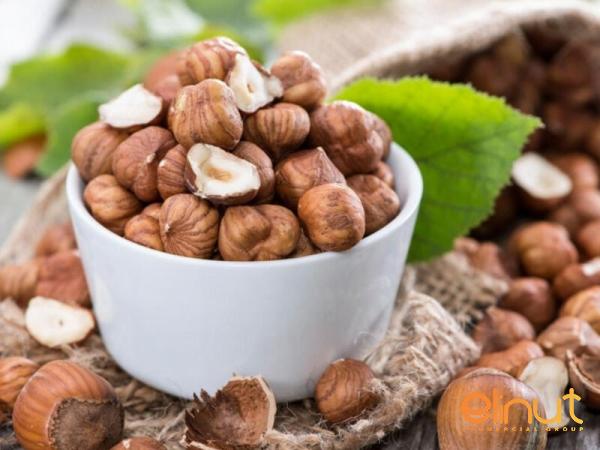 The hazelnut industry in Turkey contributes significantly to the country’s economy, providing employment opportunities and generating substantial export revenue. II. Hazelnut Production and Supply Chain The production of hazelnuts involves a series of stages, starting from cultivation to post-harvest processing. Farmers carefully select hazelnut varieties and plant them in orchards where they require proper care and maintenance throughout the growth process. Hazelnuts are harvested when they reach optimal maturity, typically in late summer or early autumn. After harvest, the nuts undergo cleaning and sorting processes, where damaged, moldy, or undersized nuts are removed. The sorted nuts are then dried and processed further for various applications, such as roasting, blanching, or oil extraction. The processed hazelnuts are packed and distributed to wholesalers, retailers, and manufacturers, both domestically and internationally. III. Market Trends and Demand for Hazelnuts The global demand for hazelnuts has been steadily increasing, driven by the rising popularity of hazelnut-based products, including spreads, chocolates, and snacks. Hazelnuts are widely recognized for their rich flavor and unique texture, making them a favored ingredient in various confectionery and bakery items. With increasing consumer awareness about the health benefits of hazelnuts, there has been a surge in demand for hazelnut-based snacks and ingredients in healthier food formulations. The market for hazelnuts is projected to witness further growth in the coming years, driven by factors such as product innovation, expanding consumer preferences, and the growing popularity of plant-based diets. IV. Hazelnut Processing and Value-Added Products Hazelnuts undergo various processing techniques to enhance their flavor, shelf life, and suitability for different culinary uses. Roasting hazelnuts intensifies their flavor and imparts a delightful aroma, making them a popular snack choice. Blanching involves removing the skins from hazelnuts, resulting in a smooth and creamy texture, often used for making hazelnut butter or as an ingredient in confectionery. Hazelnut oil extraction is another significant processing technique, where the oil is extracted from the nuts to be used in cooking, cosmetics, and personal care products.
The hazelnut industry in Turkey contributes significantly to the country’s economy, providing employment opportunities and generating substantial export revenue. II. Hazelnut Production and Supply Chain The production of hazelnuts involves a series of stages, starting from cultivation to post-harvest processing. Farmers carefully select hazelnut varieties and plant them in orchards where they require proper care and maintenance throughout the growth process. Hazelnuts are harvested when they reach optimal maturity, typically in late summer or early autumn. After harvest, the nuts undergo cleaning and sorting processes, where damaged, moldy, or undersized nuts are removed. The sorted nuts are then dried and processed further for various applications, such as roasting, blanching, or oil extraction. The processed hazelnuts are packed and distributed to wholesalers, retailers, and manufacturers, both domestically and internationally. III. Market Trends and Demand for Hazelnuts The global demand for hazelnuts has been steadily increasing, driven by the rising popularity of hazelnut-based products, including spreads, chocolates, and snacks. Hazelnuts are widely recognized for their rich flavor and unique texture, making them a favored ingredient in various confectionery and bakery items. With increasing consumer awareness about the health benefits of hazelnuts, there has been a surge in demand for hazelnut-based snacks and ingredients in healthier food formulations. The market for hazelnuts is projected to witness further growth in the coming years, driven by factors such as product innovation, expanding consumer preferences, and the growing popularity of plant-based diets. IV. Hazelnut Processing and Value-Added Products Hazelnuts undergo various processing techniques to enhance their flavor, shelf life, and suitability for different culinary uses. Roasting hazelnuts intensifies their flavor and imparts a delightful aroma, making them a popular snack choice. Blanching involves removing the skins from hazelnuts, resulting in a smooth and creamy texture, often used for making hazelnut butter or as an ingredient in confectionery. Hazelnut oil extraction is another significant processing technique, where the oil is extracted from the nuts to be used in cooking, cosmetics, and personal care products.
Buy nuts
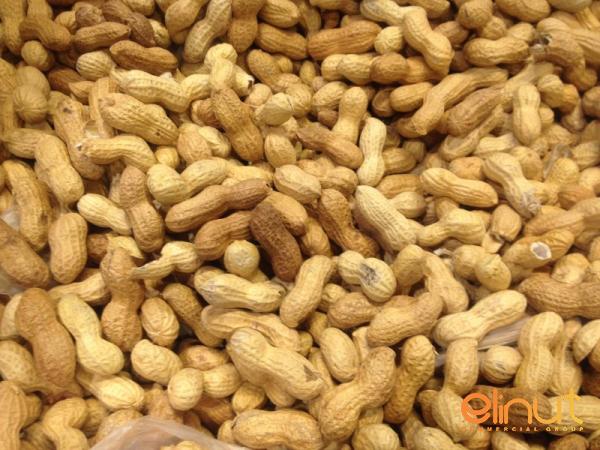 The versatility of hazelnuts and their processed forms provides numerous opportunities for creating value-added products, catering to various consumer demands. V. The Peanut Industry The peanut industry is a significant sector within the global agricultural market. Peanuts are widely cultivated and consumed worldwide due to their versatility, nutritional benefits, and widespread use in both culinary and non-culinary applications. Peanut production is predominantly concentrated in countries such as China, India, the United States, and Nigeria. The industry encompasses large-scale commercial peanut farms, processing facilities, and distribution networks contributing to the overall economy of these countries. VI. Peanut Farming and Processing Peanut farming involves careful planning and cultivation techniques to ensure optimal growth and yield. Soil quality, temperature, and moisture are critical factors that impact peanut cultivation. After the harvesting process, where the plants are uprooted and the peanuts are extracted from their shells, the nuts undergo various processing methods. Peanuts can be consumed in their raw, roasted, or blanched forms. Additionally, they can be ground into peanut butter or extracted to obtain peanut oil. Additionally, peanuts can be further processed into flours, snacks, and ingredients for both sweet and savory applications. VII. Product Diversification and Market Demand for Peanuts The demand for peanuts has witnessed a steady increase in recent years, driven by their versatility and nutritional value. Peanuts are a common commodity in the snack food industry, including roasted peanuts, peanut butter, and peanut-based snacks. Peanut butter, in particular, has gained immense popularity globally, becoming a staple in many households. Its versatility has led to its inclusion in a variety of culinary creations, including desserts, sauces, and savory dishes. Furthermore, peanuts are often utilized in the production of oils, flour, and protein-rich food supplements, catering to the growing demand for plant-based alternatives. VIII. Hazelnut and Peanut Market Challenges Despite the growth and increasing demand in both the hazelnut and peanut industries, there are several challenges that stakeholders must address. Climate change, including fluctuating weather patterns and temperature extremes, poses a significant threat to the production and quality of hazelnuts and peanuts. Disease outbreaks, such as bacterial or fungal infections, can lead to crop losses and impact the overall supply chain. Additionally, fluctuating prices, changing consumer preferences, and stiff competition from other nut varieties and substitutes are some of the challenges faced in the global hazelnut and peanut markets.
The versatility of hazelnuts and their processed forms provides numerous opportunities for creating value-added products, catering to various consumer demands. V. The Peanut Industry The peanut industry is a significant sector within the global agricultural market. Peanuts are widely cultivated and consumed worldwide due to their versatility, nutritional benefits, and widespread use in both culinary and non-culinary applications. Peanut production is predominantly concentrated in countries such as China, India, the United States, and Nigeria. The industry encompasses large-scale commercial peanut farms, processing facilities, and distribution networks contributing to the overall economy of these countries. VI. Peanut Farming and Processing Peanut farming involves careful planning and cultivation techniques to ensure optimal growth and yield. Soil quality, temperature, and moisture are critical factors that impact peanut cultivation. After the harvesting process, where the plants are uprooted and the peanuts are extracted from their shells, the nuts undergo various processing methods. Peanuts can be consumed in their raw, roasted, or blanched forms. Additionally, they can be ground into peanut butter or extracted to obtain peanut oil. Additionally, peanuts can be further processed into flours, snacks, and ingredients for both sweet and savory applications. VII. Product Diversification and Market Demand for Peanuts The demand for peanuts has witnessed a steady increase in recent years, driven by their versatility and nutritional value. Peanuts are a common commodity in the snack food industry, including roasted peanuts, peanut butter, and peanut-based snacks. Peanut butter, in particular, has gained immense popularity globally, becoming a staple in many households. Its versatility has led to its inclusion in a variety of culinary creations, including desserts, sauces, and savory dishes. Furthermore, peanuts are often utilized in the production of oils, flour, and protein-rich food supplements, catering to the growing demand for plant-based alternatives. VIII. Hazelnut and Peanut Market Challenges Despite the growth and increasing demand in both the hazelnut and peanut industries, there are several challenges that stakeholders must address. Climate change, including fluctuating weather patterns and temperature extremes, poses a significant threat to the production and quality of hazelnuts and peanuts. Disease outbreaks, such as bacterial or fungal infections, can lead to crop losses and impact the overall supply chain. Additionally, fluctuating prices, changing consumer preferences, and stiff competition from other nut varieties and substitutes are some of the challenges faced in the global hazelnut and peanut markets.
nuts + buy and sell
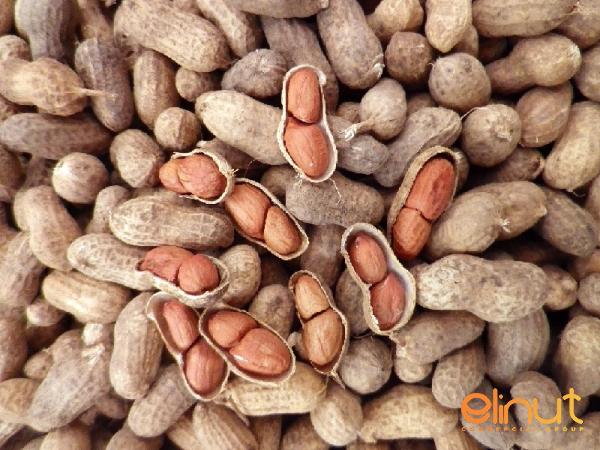 IX. Hazelnut and Peanut Sustainability Practices Sustainability and responsible practices are gaining momentum in the agricultural sector, including the hazelnut and peanut industries. Sustainable farming methods, such as reducing chemical inputs, increasing biodiversity, and implementing efficient water management, help minimize environmental impact and ensure a long-term supply of high-quality nuts. Furthermore, initiatives promoting fair trade practices and social responsibility are increasingly being adopted by hazelnut and peanut producers to support local farmers and workers involved in the industry. X. Future Prospects and Emerging Trends The future prospects of the hazelnut and peanut industries look promising, given the increasing consumer demand for healthier and plant-based food options. Hazelnuts and peanuts, with their nutritional profiles and versatility, are well-positioned to meet these demands. With ongoing research and development, innovative product formulations, and sustainable farming practices, the hazelnut and peanut industries are expected to continue growing globally. Emerging trends such as hazelnut and peanut-based gluten-free and vegan products, as well as the advent of new processing technologies, will further stimulate market growth and open up new opportunities for businesses in these sectors. Conclusion: Hazelnuts and peanuts offer unique diversities in terms of origin, nutritional profile, culinary uses, and potential health benefits. With hazelnuts being native to Europe and Asia, and peanuts originating from South America, both nuts have found their way into various cuisines worldwide. The hazelnut industry, led by Turkey, has witnessed significant growth, while the global peanut industry revolves around large-scale production in countries such as China and India. Both hazelnuts and peanuts provide essential nutrients and offer several health benefits. As demand for healthier food options continues to rise, opportunities for value-added hazelnut and peanut products in various forms, including oils, flours, butters, and snacks, are on the rise. Despite challenges, such as climate change and changing consumer preferences, sustainable farming practices and ongoing research and development contribute to the promising future of the hazelnut and peanut industries.
IX. Hazelnut and Peanut Sustainability Practices Sustainability and responsible practices are gaining momentum in the agricultural sector, including the hazelnut and peanut industries. Sustainable farming methods, such as reducing chemical inputs, increasing biodiversity, and implementing efficient water management, help minimize environmental impact and ensure a long-term supply of high-quality nuts. Furthermore, initiatives promoting fair trade practices and social responsibility are increasingly being adopted by hazelnut and peanut producers to support local farmers and workers involved in the industry. X. Future Prospects and Emerging Trends The future prospects of the hazelnut and peanut industries look promising, given the increasing consumer demand for healthier and plant-based food options. Hazelnuts and peanuts, with their nutritional profiles and versatility, are well-positioned to meet these demands. With ongoing research and development, innovative product formulations, and sustainable farming practices, the hazelnut and peanut industries are expected to continue growing globally. Emerging trends such as hazelnut and peanut-based gluten-free and vegan products, as well as the advent of new processing technologies, will further stimulate market growth and open up new opportunities for businesses in these sectors. Conclusion: Hazelnuts and peanuts offer unique diversities in terms of origin, nutritional profile, culinary uses, and potential health benefits. With hazelnuts being native to Europe and Asia, and peanuts originating from South America, both nuts have found their way into various cuisines worldwide. The hazelnut industry, led by Turkey, has witnessed significant growth, while the global peanut industry revolves around large-scale production in countries such as China and India. Both hazelnuts and peanuts provide essential nutrients and offer several health benefits. As demand for healthier food options continues to rise, opportunities for value-added hazelnut and peanut products in various forms, including oils, flours, butters, and snacks, are on the rise. Despite challenges, such as climate change and changing consumer preferences, sustainable farming practices and ongoing research and development contribute to the promising future of the hazelnut and peanut industries.


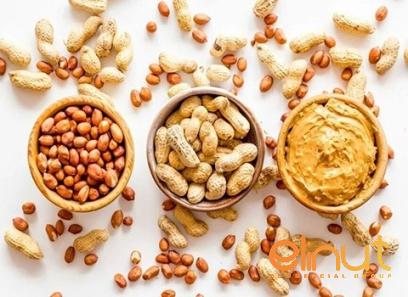
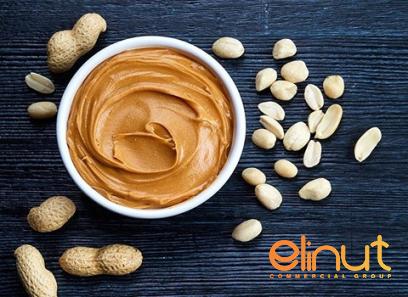

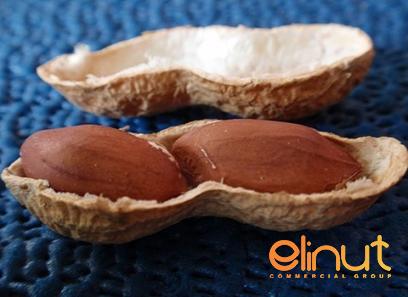
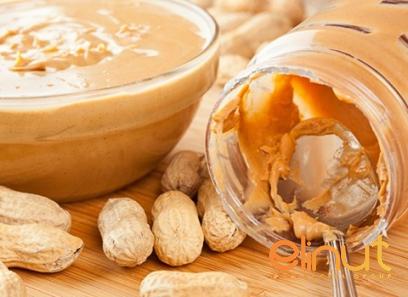
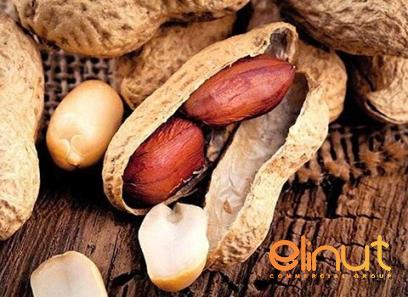
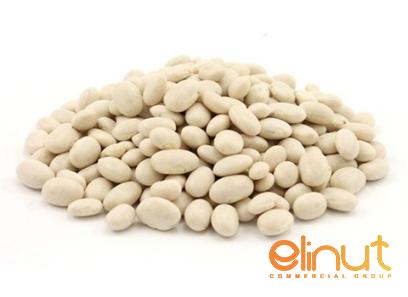

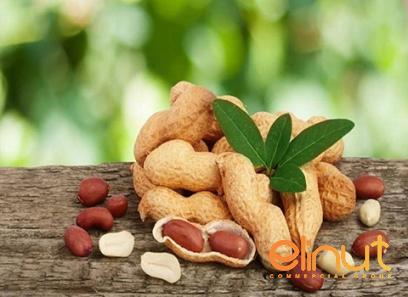
Your comment submitted.